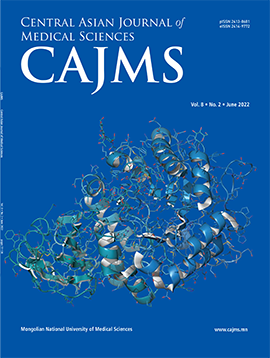Using Network Pharmacology to Clarify the Therapeutic Mechanism of Hataagqi-19 Hot Compress Therapy in Rats with Lumbar Disc Herniation
DOI:
https://doi.org/10.24079/cajms.2021.06.002Keywords:
Intervertebral Disc Disease, Traditional Medicine, Physical TherapyAbstract
Objective: This study aims to determine the primary efficacy of traditional medicine treatment of Lumbar disc herniation (LDH) and the effect of Hataagqi-19 hot compress (H19+HC) therapy on LDH rats. Methods: Referencing ancient books of Mongolian medicine, we studied the theoretical basis of Mongolian medicine to treat LDH. We performed operations to establish a model of SD rats with LDH treated with H19+HC. Paw withdrawal threshold (PWT) was detected, serum TNF-α, IL-6, and IL-1β were measured by ELISA, and immunohistochemical staining was used to measure IL-6, CD68, and IgG. Results: The medicinal properties of the drugs for the treatment of LDH are mainly dry “Xieriwusu,” heat-clearing, and suppressing “Heyi” medicine. The PWT value, serum TNF-α, IL-6, IL-1β and tissue IL-6, CD68, IgG of H19+HC was lower than that of the control group. The nucleus pulposus of the H19+HC was significantly smaller than that of the control group. The positive staining result in the main inflammatory cells of the lesion was CD68. Conclusions: Mongolian medicine treatment of LDH is based on the dry “Xieriwusu,” heat-clearing, and suppressing “Heyi” efficacy. The H19+HC therapy follows this efficacy and has the effects of improved abnormal behavior, analgesic, anti-inflammatory, and reabsorption of the nucleus pulposus.
Downloads
387
Downloads
Published
How to Cite
Issue
Section
License
Copyright (c) 2021 Mongolian National University of Medical Sciences

This work is licensed under a Creative Commons Attribution-NonCommercial 4.0 International License.




